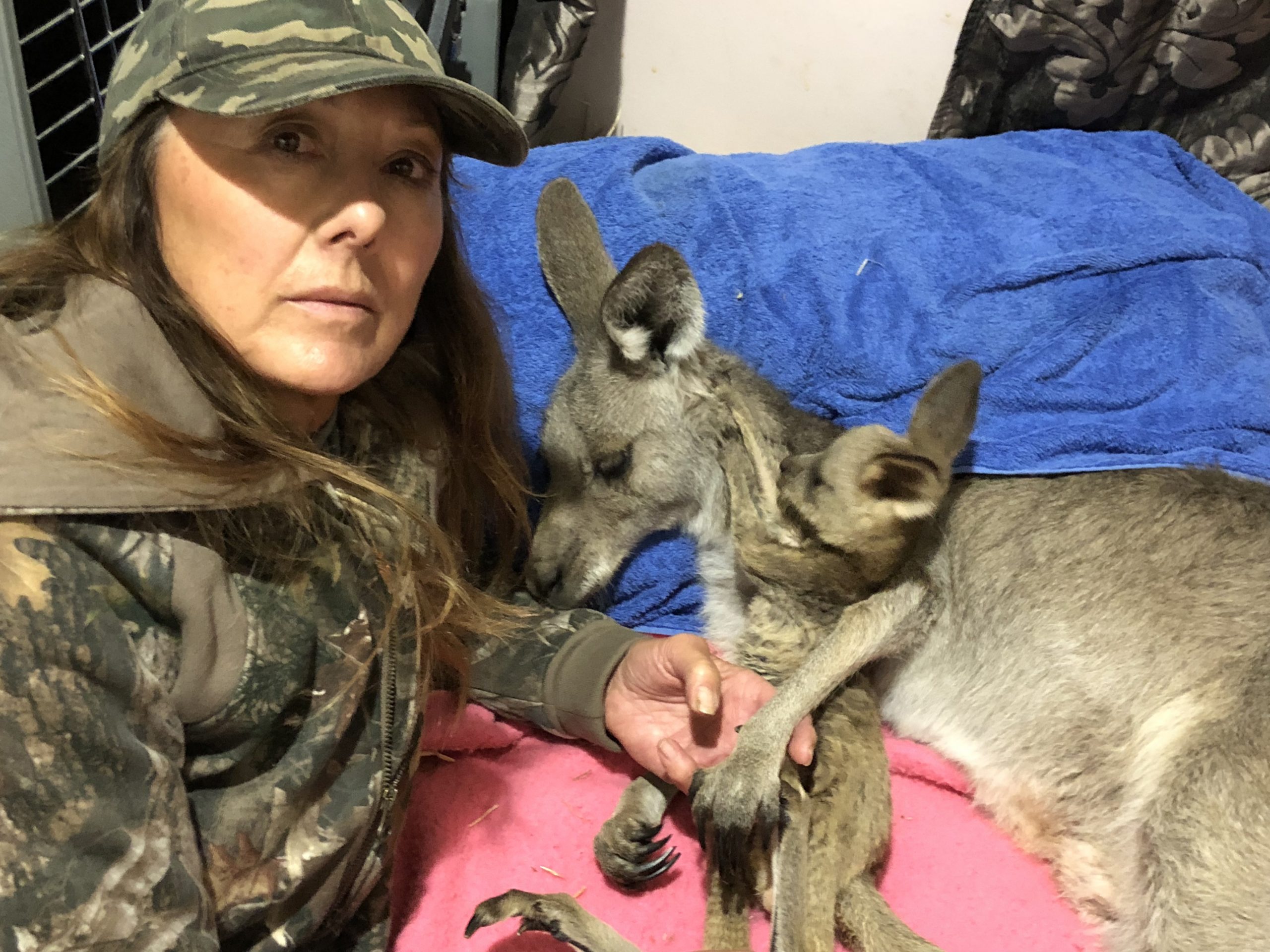Sue Anderson has been devoting her time, energy and equipment to rescuing injured wildlife for the past 18 years.
What is your connection to the Macedon Ranges?
As a child I lived in Melbourne but we had a weekend shack in Bullengarook. I loved the tranquillity of the bush and decided to come back to the Macedon Ranges and I have lived here for about 25 years.
What do you like about the Macedon Ranges?
I love the Macedon Ranges – its clean air, country views and beautiful wildlife. My concern is that the Macedon Ranges remains a green wedge and does not become another suburb of Melbourne.
If you could change anything about the area, what would it be?
I would like to see teaching at all driving schools regarding emergency braking and night driving in rural areas where wildlife is; education at schools for understanding and protection of our unique Australian wildlife; and an awareness of the danger imposed by ring lock and barbed fencing restricting movement of wildlife.
Tell us about being part of the Macedon Ranges Wildlife Network.
Since living here I have noticed a huge change in the area. There is more development, more cars, and more people coming from the city and surrounding areas.
I became a volunteer wildlife rescuer as a matter of necessity when I noticed animals being hit by cars and left to die on the side of the road. I find it unbelievable that people can just hit them and keep driving. Contrary to popular belief, our wildlife is fragile and they suffer the same injuries as a human involved in a car accident.
People assume they will be OK, however those that hop away will almost always die from their injuries.
I began rescuing in 2000 and since 2006 I have been called out to either rescue or euthanise more than 5000 animals. Most of these call-outs are all performed voluntarily including all equipment, petrol and time. The only funding I had was for tranquilising to assess injuries, but this was withdrawn in August 2017 from Wildlife Victoria due to lack of funds. There is no financial support or recognition from government or local council.
What type of incidents are you called out to?
I see many horrific injuries, like a paramedic, but on top of this I have the added stress of ending the creature’s pain and suffering. On a weekly basis I euthanise those that have been hung up in fences. I have searched many firegrounds looking for burnt creatures, climbed trees to rescue koalas, and birds entangled in rubbish, e.g. hay bale twine or string, often resulting in the loss of a limb due to constriction.
Other types of rescues included an echidna from a 45-foot mine shaft in Smythesdale, dragging a wallaby from a water treatment plant, and rescuing wallabies and kangaroos from backyards in suburbia due to development.
Sadly these days, most of the calls are mainly from people running them over. Drivers must use their peripheral vision and be attentive in rural areas, particularly from dusk till dawn.
Lately there has been more frequent dog attacks on wildlife due to roaming unattended domestic dogs. It’s depressing as a volunteer to be called out to deal with these stressful situations, when they could be avoided by people just being more responsible. Cats are also responsible for attacking possums, birds, phascogales and feather tail gliders, most often resulting in death.
For injured wildlife call 1300 094 535 from 7.30am-7.30pm or log cases online after hours.







